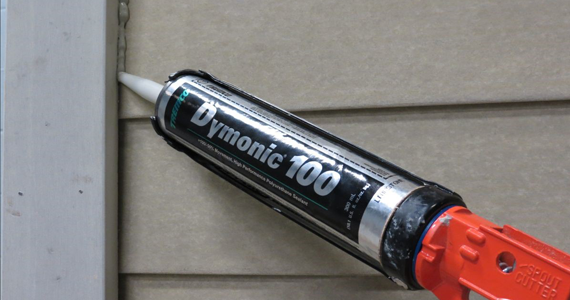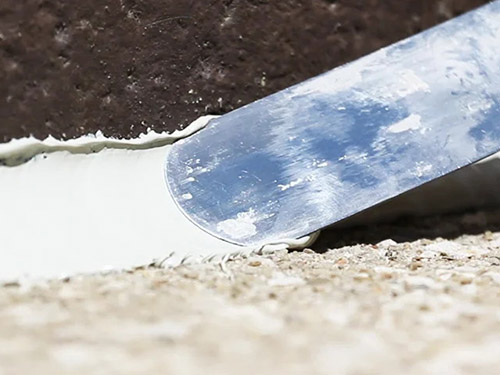
Aside from their primary function of allowing natural light into a building and affording the occupants a view of the world outside, windows also contribute to the ventilation and insulation of a building. In order to fulfil the latter tasks, correct installation and perimeter sealing is imperative.
Usually, this would refer to the sealing of the head, jambs, sill, and along the entire interior and exterior casing of the window.
The purpose of proper window perimeter sealing goes beyond just keeping the rain out, it also ensures that the building is airtight. Simply put, air and vapour control layers (AVCL) are important to improve the energy conservation of the building and control indoor environmental quality whilst extending the lifespan of the window and providing cost savings to the owner.
Sealants have long been used as a form of low-cost and immediate prevention of water and air infiltration. Despite the ‘wet’ caulking, sealants cure to form a dry, elastomeric compound. There are three main types of sealants for window perimeter sealing: Polyurethane, Silicone, and Hybrid.
| Type | Chemical Composition | UV Response | Weather Resistance | Usage | Price |
|---|---|---|---|---|---|
| Polyurethane | Organic | Prone to discolouring. | Good | Best for porous substrates. | Medium |
| Silicone | Inorganic | Prevents discolouration and deterioration. | Excellent | Best for metal, glass. | High |
| Hybrid | Inorganic | Less likely to experience discolouration. | Excellent | Suitable for all construction materials including metal, plastic, polycarbonate, and ceramic. | Medium |
Alternatively, tapes and membranes can also be used to effectively seal the window perimeter. Below are two commonly used types:
Impregnated tapes are usually made from polyurethane (or similar) foam and are saturated in various synthetic resins including water repellants and flame retardants. These foams expand after installation, filling gaps, and providing weatherproofing, vapour diffusion as well as acoustic insulation. The impregnated foam tapes generally have a long life span because they continually expand and contract to accommodate movement while completely sealing the joints and perimeter.
Sealing membranes are typically EPDM-based, Butyl-based, or a combination of polyethylene copolymers that provide an air-tight and water-tight seal for interior and exterior applications. Available in various widths and lengths, they offer applicators the option to apply before or after window installation. Membranes are normally used in conjunction with a sealant.
Most of the time, foams are used as an airtight gap filler, especially in joints where movement is expected to occur. They also provide excellent acoustic properties.
Typically gun applied, air insulating foams fill and seal between window frameworks and rough openings easily and quickly. Once cured, they form an airtight, water-resistant barrier that provides excellent elasticity and sound insulation. However, they do not provide good UV protection, so they are typically used in combination with a sealant.
These types of foam products are made from pre-compressed, self-expanding foam that are engineered to perform as a highly flexible, weather-tight, flame retardant seal in primary expansion, control, and construction joints.
1. For Sealants

2. For Tapes and Membranes
3. For Foams
While there are advantages and disadvantages to using any of the above, what is important to keep in mind is that it requires both good workmanship and the appropriate high-performance products to ensure that the window perimeter is effectively water-and-air-tight.
The best solution is to incorporate a trusted and proven system, one which may or may not offer a combination of sealants, tapes, membranes, and foams into the design. That way, you can be assured that every product used serves its purpose and works together to prevent leaks, mildew growth, air drafts, dirt, frame rotting, paint peeling, insects, and other damages for a long time to come.
Tremco CPG makes the process of selecting and installing the right glazing system simple and efficient. We offer a variety of tested, proven transition solutions that can accommodate any design, from standardised to highly specialised. All our weatherproofing products provide the highest performance in adhesion, weatherability and durability to guarantee a safe and leak-free building. Our expert team is on hand to help you in any current or upcoming project you may have, get in touch with the team.
 |
Need Support? |
 Sealants, Glazing and Façades
4 steps to applying the perfect sealant every time!
Sealants, Glazing and Façades
4 steps to applying the perfect sealant every time!
Silicone sealants are used for a variety of purposes. Knowing how to properly caulk with silicone sealant can save a lot of problems in the long-term because when done correctly...
Silicone sealants are used in a variety of construction applications, including the residential, commercial, industrial and infrastructure sectors, mainly as a sealing or bonding agent...

Sign up for our newsletter

© 2024 Tremco Incorporated

